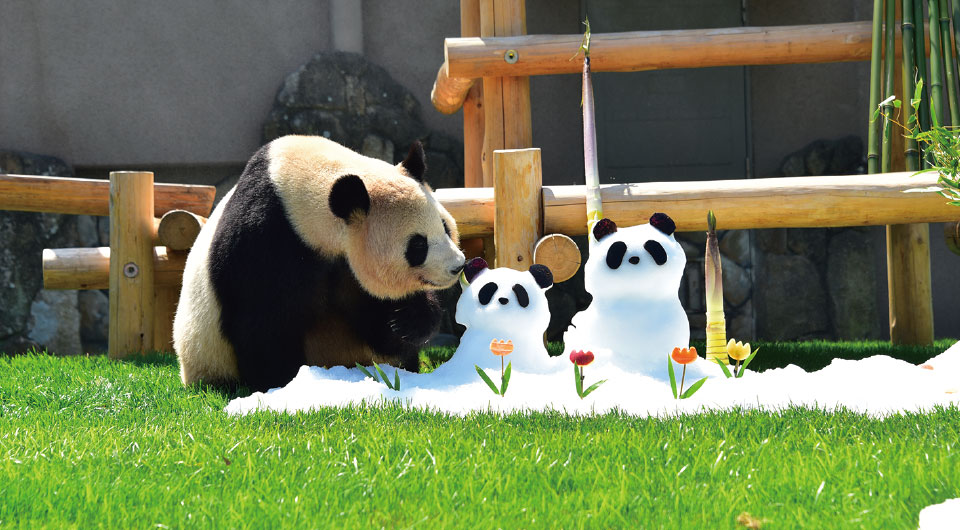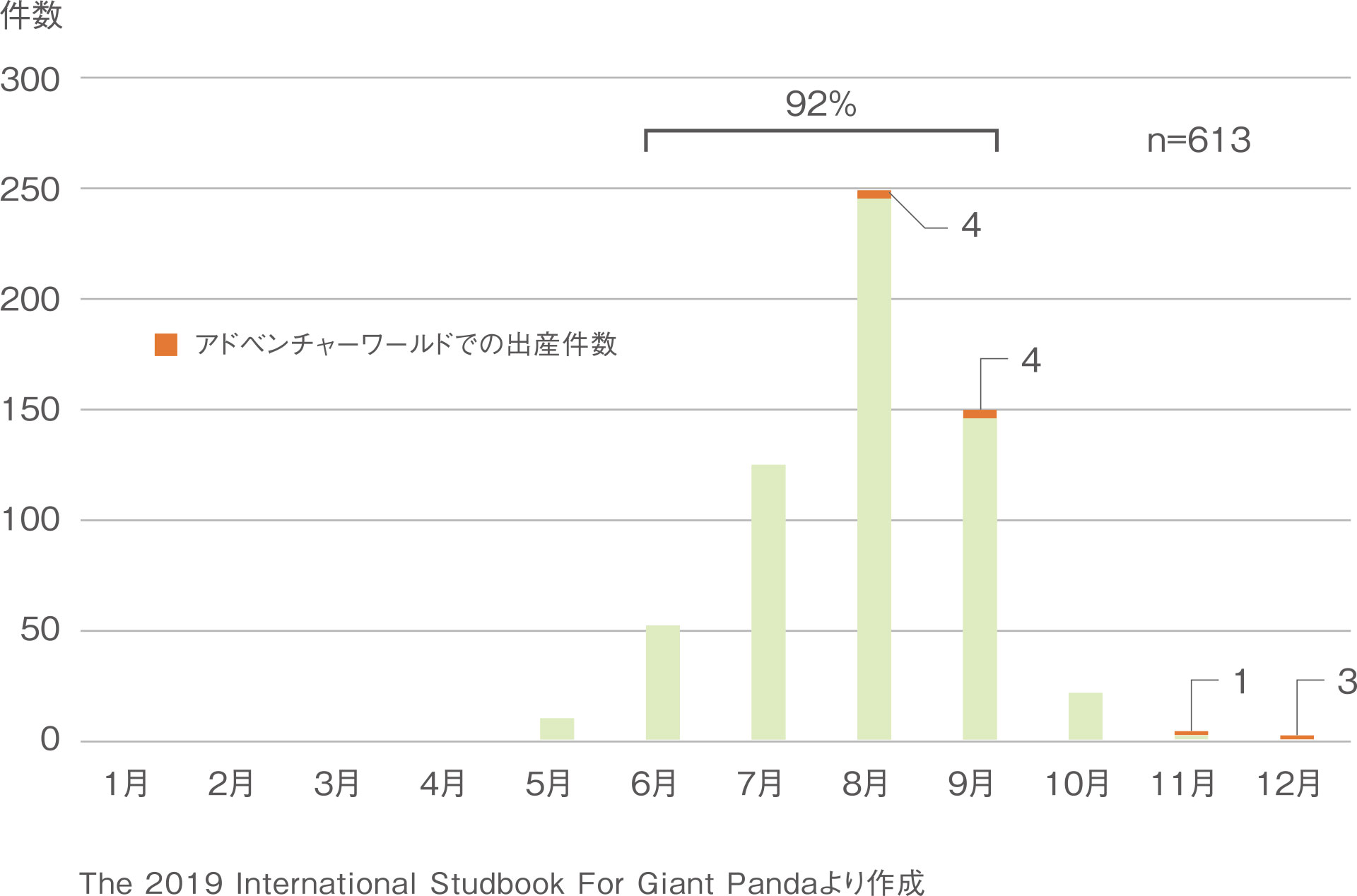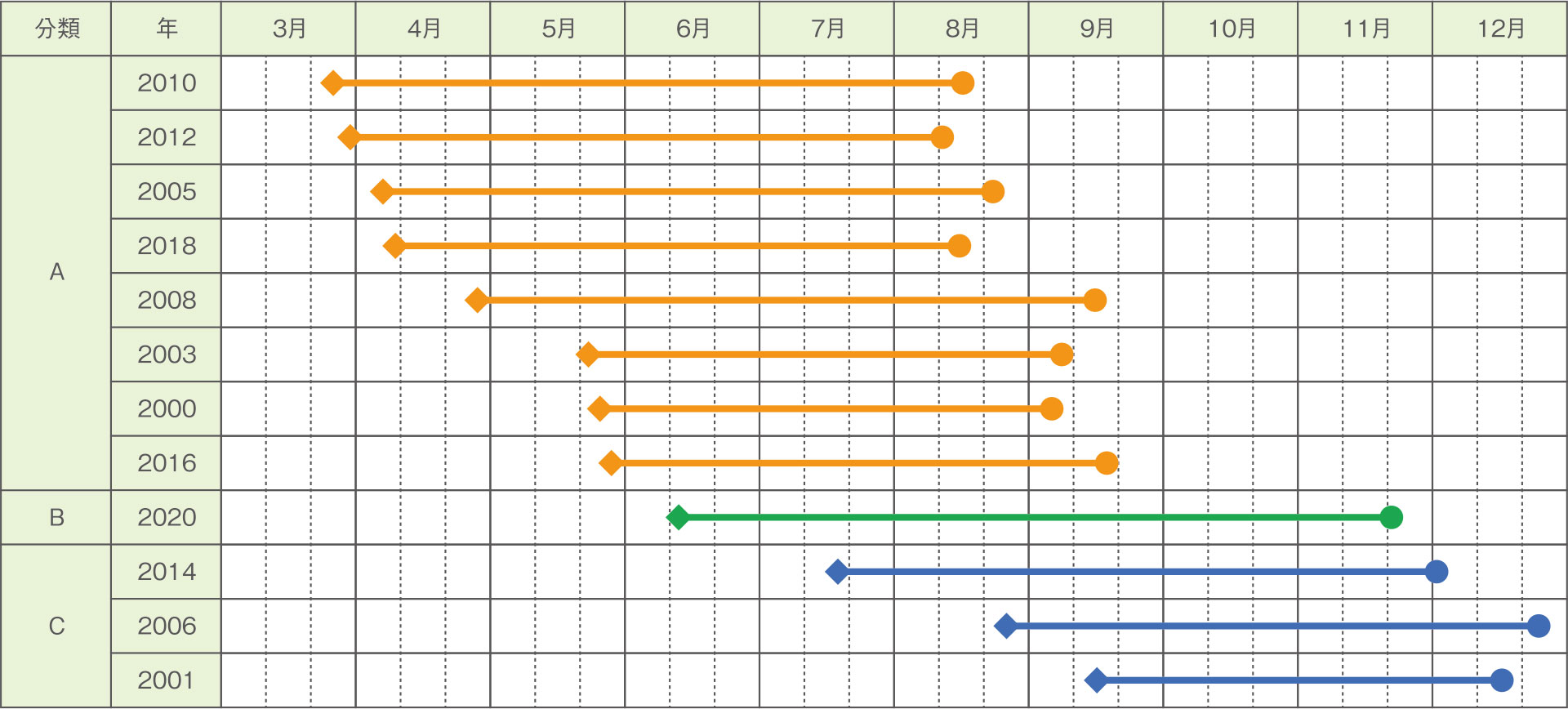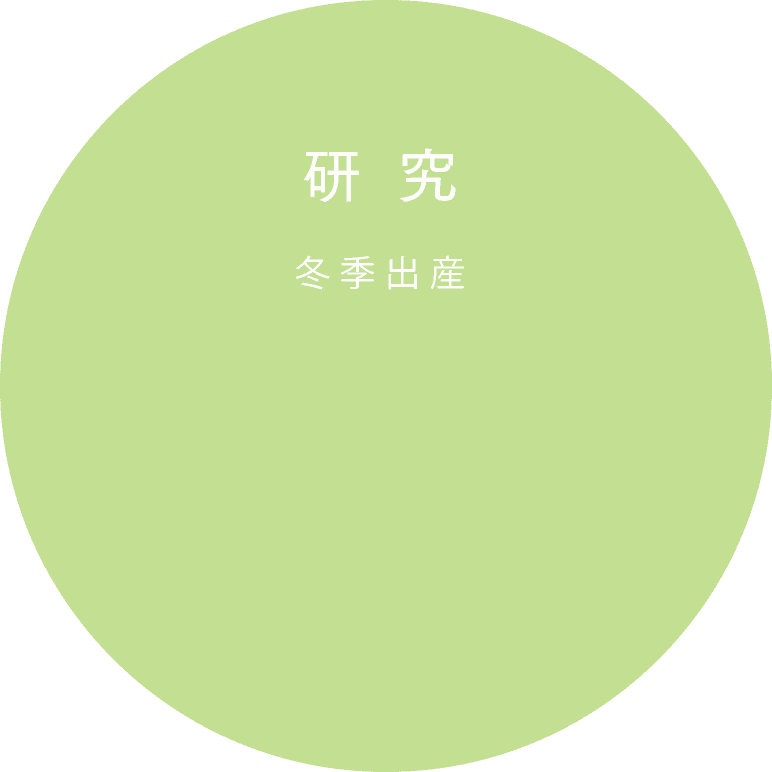

Generally, pandas are in estrus in spring and give birth in summer or early fall.
Giant pandas generally come into estrus in spring and give birth in summer or early fall. In captivity, 92% of all births occur between June and September, and winter births are rare. In captivity, there have been seven cases of winter (November-December) births, four of which occurred in the Park (one in November and three in December). (Figure 1)
Figure 1. Number of births by month

1. out-of-season estrus
Table 1 shows the breeding patterns in the Park. Two patterns of winter births were observed: one was a case in which a mating took place slightly later than usual, resulting in a longer gestation period and a winter birth (2020), and the other was a case in which a mating took place out of season from summer to early fall and a winter birth (2001, 2006, 2014).
Table 1. Breeding Patterns

◆: Mating ●: Birth
A: Seasonal (spring) estrus and mating, August to September birth
B: Slightly later than usual mating, longer gestation period and winter birth
C: Out of season (summer to early fall) estrus and mating, winter birth
The timing of onset of estrus signs for each estrus stage was compared between seasonal estrus (7 cases) and non-seasonal estrus (3 cases) (Table 2). In the case of seasonal estrus, the onset of estrus in males was observed 2-3 months earlier than in females, while in the case of non-seasonal estrus, it was observed a few days later than in females. In other words, it is assumed that males also behave as if triggered by the signs of estrus in females. (For more information on the classification of estrus stages, please refer to this page.)
Table 2.Comparison of estrus stages in seasonal and out-of-season estrus.
| number of events (e.g. accidents, crimes, meetings, housing starts, hits on a road) | estrus stage | ||||
|---|---|---|---|---|---|
| first term (e.g. of pregnancy) | mid-stationary period | peak of estrus | |||
| メス | seasonal rut | 7 | 20.0±12.2 days | 7.6±1.4 days | -0.6±0.8 days |
| out-of-season rutting | 3 | 19.3±9.3 days | -6.3±1.2 days | 0.3±0.6 days | |
| male (animal) | seasonal rut | 7 | 2-3 months | 6.3±2.0 days | 2.4±1.9 days |
| out-of-season rutting | 3 | 14.7±4.2 days | 7.0±4.0 days | 2.0±2.6 days | |
2. Winter Delivery Precautions
Room temperature and humidity control are important measures for winter childbirth. While room temperature control is essential to maintain the body temperature of newborns, humidity control is also necessary so that mothers can concentrate on raising their children. When the humidity drops below 50%, the mothers' skin becomes dry and itchy, and they frequently scratch their bodies with a cage, making it difficult for them to concentrate on childcare. As a winter environment for the maternity room, a room temperature of around 20°C and humidity of around 60% were considered desirable. (Table 3)
Table 3. Temperature and humidity in the maternity room
| number of events (e.g. accidents, crimes, meetings, housing starts, hits on a road) | Room temperature (°C) | Humidity (%) | |
|---|---|---|---|
| summer birth | 6 | 24.0±1.1 | 69.9±16.3 |
| winter delivery | 3 | 19.3±1.0 | 56.0±11.7 |
